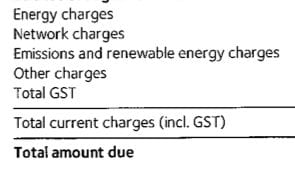Phil was in a state of shock earlier this month when he received his electricity bill from hit electricity utility – the first since a 22kW rooftop solar system had been installed at a local church in Buderim, Queensland, where he works.
Everything seemed OK. The addition of solar meant that the church’s energy use fell by one third from the previous month, as it was supposed to do. With the help of LED lighting the church had installed in previous months, the total energy use for September was around one half of the same month a year earlier.
But there was a catch. And it was a nasty one. The electricity bill had not fallen as Phil had expected, but had actually jumped by nearly 13 per cent. While his energy consumption fell, his network charges soared by more than 50 per cent – from $1,089 a month to $1,589, taking his total bill to $2,499 from $2,223 a month earlier.
“It was a bit of a shock,” says Phil, who in the interests of the church does not want to publish his family name. “You try to do the right thing to minimise energy use, and then we got this,” .
The explanation from the retailer was vague and unhelpful – something about moving to a different tariff regime. It wasn’t until RenewEconomy investigated the case that the problem became clear.
The installation of a new meter along with the solar array triggered an automatic “upgrade” of the church’s status from small business user to large business user.
That meant very low energy costs, and very high fixed charges in the form of network tariffs. The church paid the retailer 9.5c/kwh at peak times and 6.3c/kWh at off peak times for every kilowatt hour consumed.
What did change was the network component: the charge for energy usage on the local network dropped from 12c/kWh (or $961 for the month) to just 1.3c/kWh, or just $5.62 for the month.
But the “fixed” charge for the network also jumped from 55c/day to $4.50 a day.
And the coup-de-grace was a new “demand” charge of 22.3c/kW, or a total of $1,227. The demand charge is calculated on the heaviest usage in any one 30 minute period in a month. In this case it was a Sunday morning at 10.30, when church activities were in full swing and it just happened to be a cloudy and wet day.
The monthly electricity bill before solar was installed …
And the monthly electricity bill after solar was installed …
As it turns out, the church was fortunate, because the addition of LED lighting and solar means that it will fall below the 100/MWh threshold of annual consumption that defines a large user, and can once again be considered as a small business user. That puts it back into a bracket where reduced consumption does benefit.
But the issue highlights some of the bizarre tariffs in the Australian market. The utilities argue that these are “cost reflective” and fair, many consumers and the solar industry argue that it is just the opposite. One particular tariff that has horrified consumers is the $500/day fixed charge for very large business users in regional Queensland. It only applies to less than 50 companies, but it is the principle that counts.
Advocates say that these tariff regimes underline the case for battery storage in many instances. The Buderim church, as is now commonly required by the networks, had to install a device that prevents it from exporting any excess solar back to the grid – so it is motivated to consume all its output on-site.
Had it remained on the large business users tariff, it would have made sense for the Buderim church to install battery storage, just to manage those peaks like the cloudy Sunday morning.
This point was underlined by Andrew Simpson, of Brisbane-based Verdant Energy, in this piece on Why storage already makes commercial sense in Australia.
Simpson say says this is particularly the case for business customers, particularly those on demand charges whose bill is influenced less by how much power they use, and more by the level of their maximum demand. Battery storage can help shave those demand peaks, and businesses are now waking up to that opportunity.
As one network insider explained:
“Solar makes sense for small business customers because panels generate kilowatt-hours, so it’s a straight reduction off the kilowatt-hours drawn from the grid and hence a reduction in the network charges.
“Above the threshold, we switch the customer to demand pricing. We change the meter to an electronic, remote read one that measures average demand every 1/2 hour. The energy (kWh) component of the network bill falls to almost zero, and is replaced by a charge that is calculated on the maximum of all the 1/2 hour demand measurements taken in the month.
“Solar really does not assist a large customer’s network bill, unless it can be certain that the sun is shining bright when the peak demand at the customer’s premises is occurring so that the solar is offsetting the actual demand in that same 1/2 hour.
“This is where I advocate smarter control systems, where the solar can ‘block’ some energy-hungry devices is the sun is not shining – for instance, air-conditioning is set to economy mode, compressor set points are wound back, motor start parameters are adjusted when the sun is not out.”
Or, by putting in battery storage.










